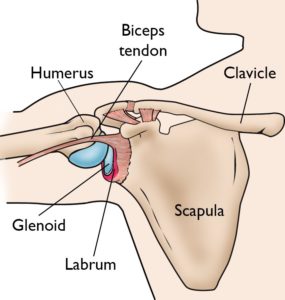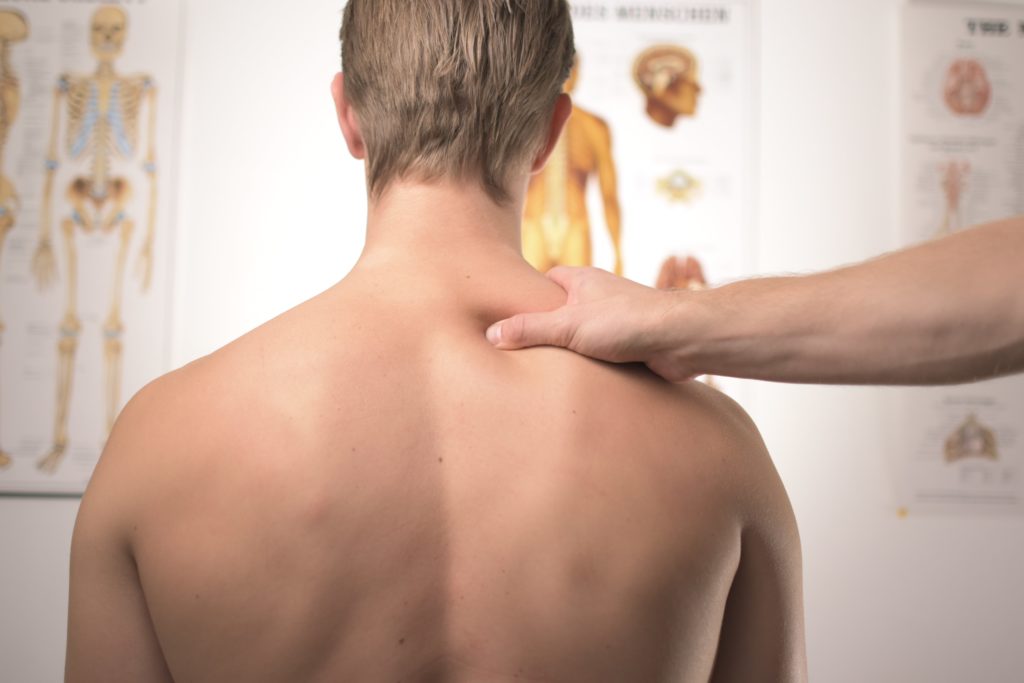What is a SLAP tear?
A SLAP tear is an injury to the cartilage of the shoulder joint called the labrum. The labrum is a ring of cartilage surrounding the socket of the shoulder joint. The humerus/arm bone forms the ball aspect of the shoulder joint. Together they form a ball and socket joint.
There are actually many types of labral tears, but the specific type of labral tear we are discussing today is the SLAP tear. SLAP stands for Superior Labrum from Anterior to Posterior, and is a fancy way to say that the cartilage at the top of the shoulder has been injured. The SLAP tear occurs at the point where the bicep tendon inserts onto the labrum, and you can see from the diagram below exactly where the injury occurs.

So, what do you do if you have a SLAP tear?
Some SLAP tears does not require surgical intervention and some do. Rehabilitation depends on the severity/size, level of discomfort and, if required, the strength of the repair and surgical protocols.
A typical guideline involves:
-
Immobilisation
-
Restore range of motion
-
Regain Strength
-
Plyometric/Dynamic Movements
Here are some tips to avoid/minimise a SLAP tear:
Due to shoulder joint having a lot of mobility, it also requires more stability. Here are a few exercises that will help to strengthen the small, stabilizing muscles of the shoulder joint.
Posterior Cuff Strengthening/Face Pulls
-
Start with your arm straight down at your side and the thumb pointing forwards.
-
Raise your arm forwards and up/above your head keeping the elbow straight.
-
Make sure you do not hunch your shoulders as you lift the arm against the resistance.
-
Control the movement bringing it down by your side, slowly bring it back to the start position and repeat.
Banded Pushups
-
Start position in a press up position with the band around your wrist, arms directly under the shoulders, fingers facing forwards. The back and trunk level and straight with the toes on the floor.
-
Lower the body using the arms and shoulders until the chest just touches the floor, keep the trunk straight and arms aligned with the shoulders.
-
Press up into the start position using the arms and shoulders only, keep the backside in line with the back and shoulders and do not arch the lower back.
Diagonal Y- Raise
-
Start with your arm straight down at your side and the thumb pointing forwards.
-
Raise your arm forwards and across, keeping the elbow straight.
-
Make sure you do not hunch your shoulders as you lift the arm against the resistance.
-
Control the movement back down to the starting position and repeat.

